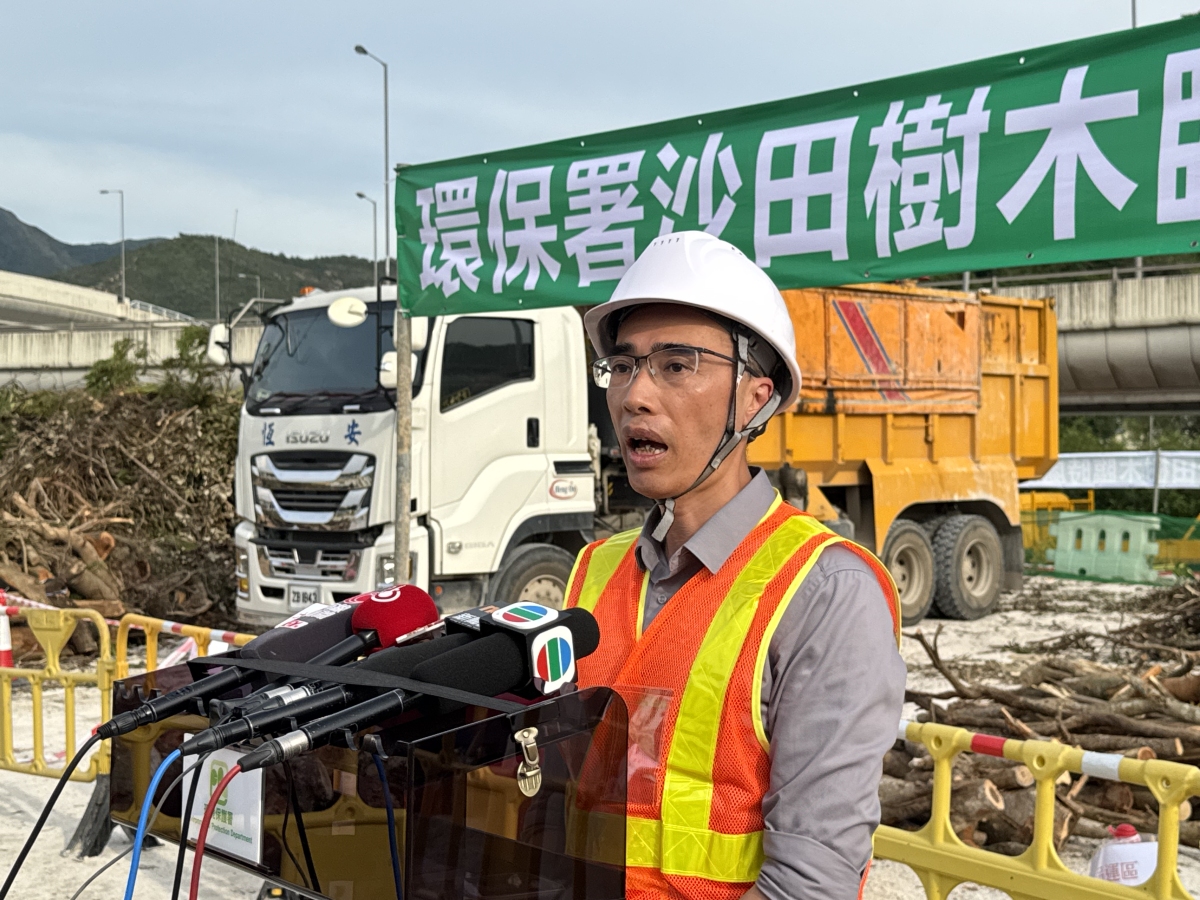
After a super typhoon struck Hong Kong, a large number of fallen trees and wood debris were discovered in many areas. To expedite cleanup and promote resource recycling, the Environmental Protection Department (EPD) established two temporary tree disposal sites in Sha Tin and Tsing Yi for the first time. These sites will enable rapid restoration of the city's appearance, maximize the recycling of wood debris, and reduce landfill pressure.

Primary Environmental Protection Officer (Facilities Management) of the EPD, Lai Chun-kit, stated that in response to the impact of Hashira, dedicated land was reserved at three landfills and the Y·Park Garden Waste Recycling Centre for temporary storage of wood debris generated by the typhoon. Furthermore, to address the long distances from landfills and high transportation costs in some areas, temporary disposal sites were established in Sha Tin and Tsing Yi to specifically handle the sorting and shredding of wood debris.
According to preliminary estimates, as of Sept. 29, approximately 1,200 metric tons of typhoon-fallen tree debris had been collected at the three landfills and Y·Park.

Lai used the Shatin temporary tree processing site as an example to explain its operational process. Upon receiving tree waste, the Shatin Temporary Tree Processing Site will initially sort it by wood, non-wood, and size. Larger wood deemed worth recycling will be transported to Y Park for upcycling, such as art and furniture, thus achieving resource recycling.
Other tree waste will be crushed and compressed using crushers. Demonstrations of the operation of different crushers were also held on site, each capable of processing tree trunks up to 12 inches in diameter, branches as thick as an arm, and young twigs and leaves. It is understood that these crushers are not temporary purchases but rather repurposed from the Environmental Protection Department's existing equipment. During operation, each machine will be staffed by four to five workers.

Lai stated that the two temporary processing sites are currently meeting departmental needs and are a pilot program. The site planning will be reviewed based on the distribution of fallen trees after the typhoon, and the establishment of additional temporary sites in other areas is not ruled out. If the pilot program is successful, resource allocation will be adjusted based on actual needs. This will maximize the recycling of tree waste and reduce landfill pressure while rapidly restoring the city's appearance.
The operating period of the Sha Tin treatment site will depend on the progress of fallen tree clearing across Hong Kong. While currently scheduled to operate until Oct. 4, the site will be extended in coordination with relevant departments until the core cleanup work is completed.
Related News:
EPD forecasts serious air quality ahead, urges children & elderly to limit outdoor activities




















Comment